Books
Books
in random order

Family Picture
An essay in the form of painting studies - including persons, dogs, a frog, a hoofed animal, fish, hare, trees and plants.
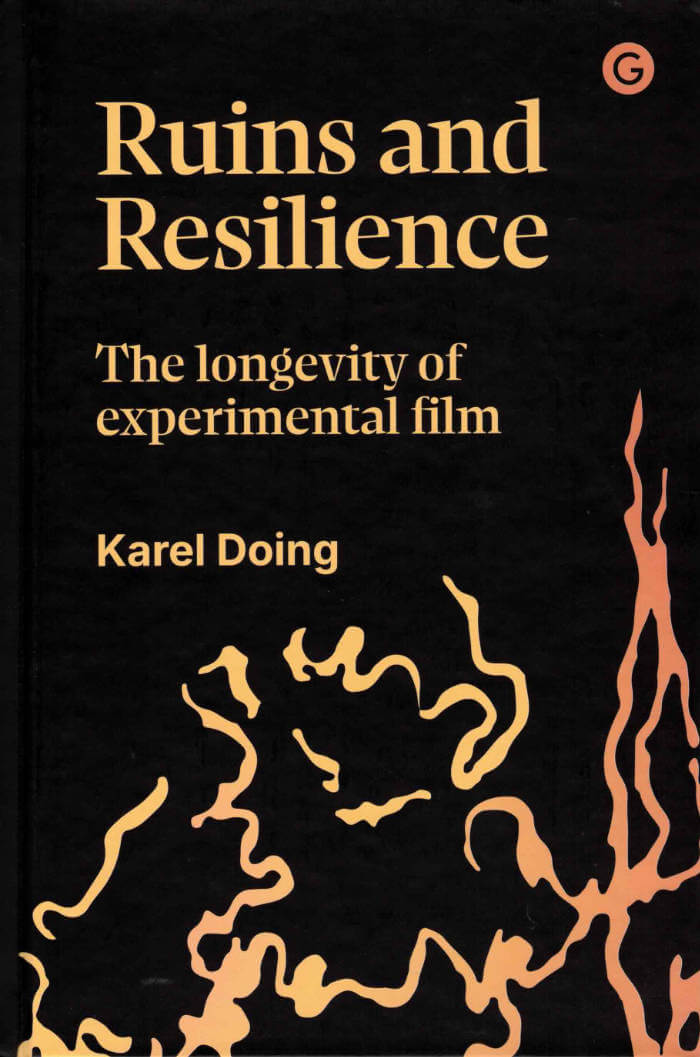
Ruins and Resilience: The Longevity of Experimental Film
Experimental film practice from an international and transdisciplinary perspective.
Karel Doing is an experimental filmmaker and researcher who has worked across the globe with fellow artists and filmmakers, creating a body of work that is difficult to pinpoint with a simple catchphrase. In Ruins and Resilience he weaves autobiographical elements and critical reviews together with his wide ranging interdisciplinary approach, reflecting on his own practice by positioning key works within the context of a vibrant experimental film scene in Europe, North and South America, and Asia. Doing demonstrates how experimental filmmakers have continued to renew their practice despite the almost total demise of analog motion picture film and the constant neglect of this art form by institutions and critics. Written in a fluent and accessible style, the book looks into the connections between the work of groundbreaking artists within the field and subjects such as transgression, improvisation, collectivity, materiality, phenomenology, and perception. Specifically, intersections with music and sound are investigated, appealing to the idea of the cross-modal brain, the ability to perceive sounds and images in an integrated way. Instead of looking again at the "golden era" of experimental film, the book starts in the 1980s, showing how this art form has never ceased to surprise and inspire. The author's hands-on engagement with the medium is formational for his more theoretical approach and writing, making the book a highly original contribution in the field that is informative and inspiring for academic and practitioners alike.

A Horse at the Door
A chronology of poems selected & translated by Robin Moger.
I had intended my poetry to be a kind of salvation for me in my confrontation with the onslaught of a perpetually antagonistic world. When this confrontation failed, I tried convincing myself that surrendering to the world—being a scrap of paper floating downriver—was the only salvation available to me. But this proved impossible, too.
Wadih Saadeh
In a 2014 AlMayadeen TV interview with the Lebanese poet-host Zahi Wehbe, Wadih Saadeh called his work ‘an autobiography of other people’s lives.’ At this point in the conversation he had already explained that people are essentially alike, so the deeper you plunge into yourself the more you find out about others. Speaking casually, the then sixty-six-year-old—very arguably the greatest living Arabic poet—did not seem to realise how startling is the idea. Donald M. Murray’s ‘All Writing is Autobiography’ is one thing, but to say that poetry is a way to be someone else, and so let someone else be you—that feels like a coup de foudre. A poem, Saadeh told Wahbe, is ‘a momentary, illusory cure’ from the horrors of the world, wounds actually dressed by working, having a family, emigrating. He called the third person, which in Arabic translates to ‘the absent one,’ ‘a shadow self, the self that cannot be present.’ Summoning that inner absence, switching on the reader’s presence, is what the Lebanese master manages, every time.
Youssef Rakha,
from his Afterword, ‘The Australian’
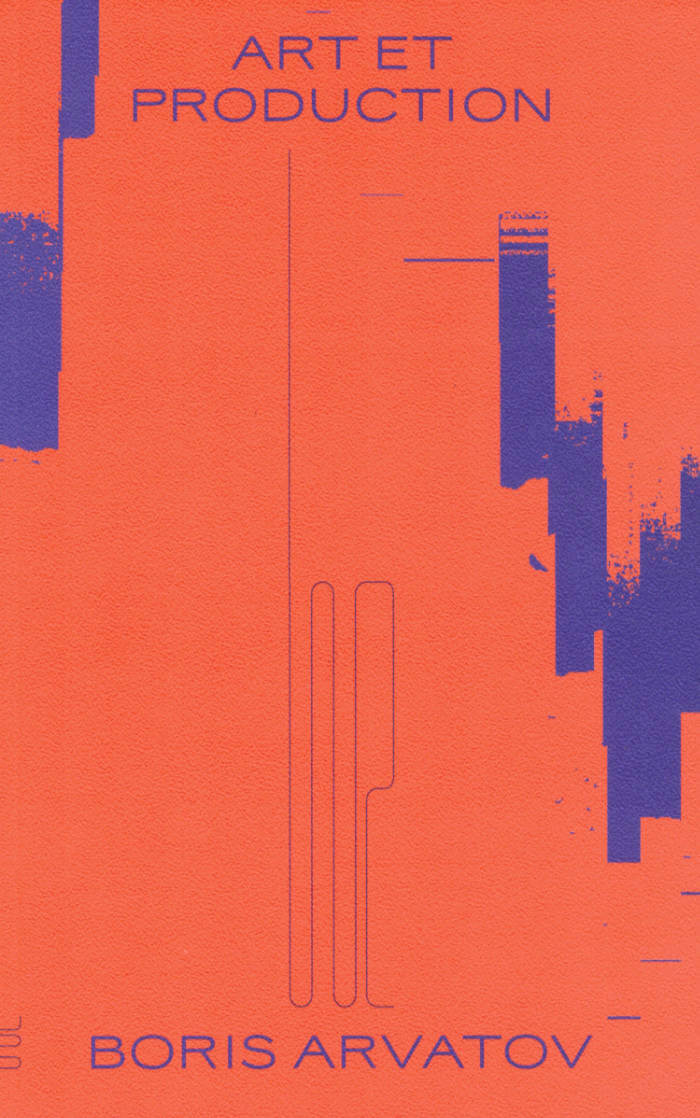
Art et production
Art et production de Boris Arvatov fait partie des classiques oubliés des avant-gardes qui se sont épanouies durant la Révolution russe. Publié à Moscou en 1926, il vient porter le fer dans les débats qui agitent l’école constructiviste : que doit être le statut de l’art après la révolution, ses liens avec les techniques industrielles de reproduction, avec la critique de la vie quotidienne, comment doit-il entrer dans l’usine ? Autant d’interrogations radicales, témoignages d’une séquence politico-sociale bouillonnante. Une nouvelle conception de l’art émerge, qui laissera une empreinte indélibile sur une tradition de critiques matérialistes de la culture, de Walter Benjamin à Peter Bürger, en passant par Fredric Jameson, celle qui posera la question de l’articulation entre pratique artistique et logiques propres à la sphère de la production. Un document exceptionnel enrichi d’illustrations, paraissant en français pour la première fois, une porte prviliégiée sur un moment-clé de la modernité exthétique du XXe siècle.
Boris Arvatov (1896–1940) est un artiste et critique d’art russe. Il est notamment connu comme théoricien du productivisme, un mouvement d’avant-garde post-révolutionnaire lié au constructivisme.

The North Road Songbook
The North Road Songbook collects together eight sequences of poems, most of which were composed between 2019 and 2024. The title sequence is a set of lyrics written around North Road in Brighton, originally a mediaeval field boundary, now a chaotic thoroughfare filled with ghosts, sirens and songs.
Verity Spott is a poet, teacher and care worker from Brighton, England, whose books include Hopelessness (the 87press), Poems of Sappho (in translation) and Prayers Manifestos Bravery (Pilot Press). Verity’s poetry has appeared in The New York Times and has been translated into French, German and Greek.
Paperback
252pp
ISBN: 9781739364977
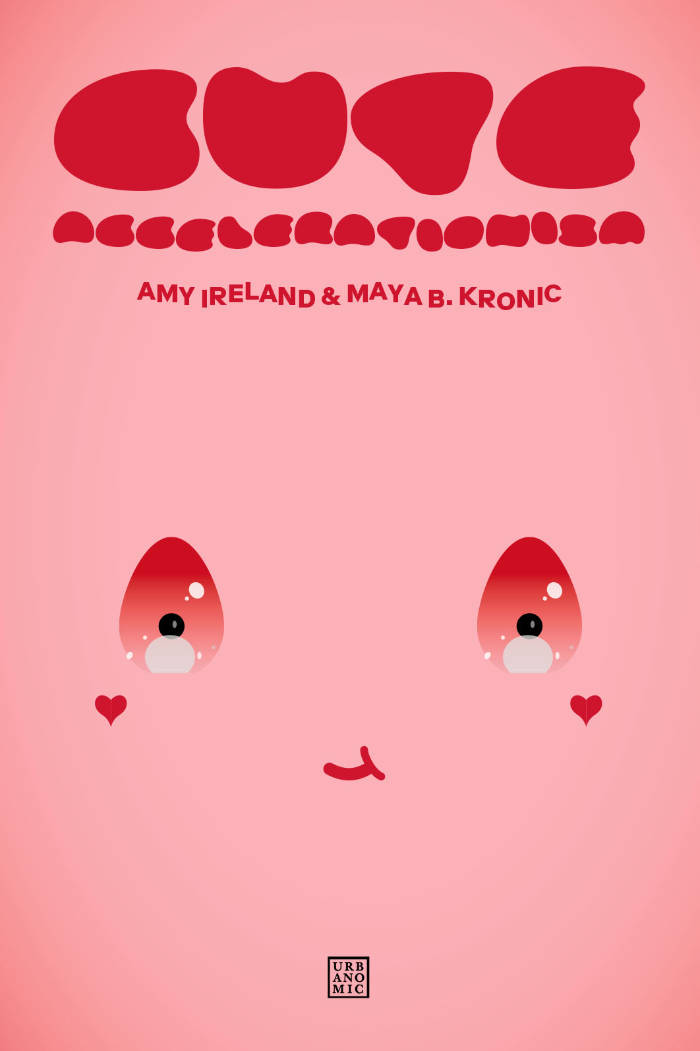
Cute Accelerationism
Involuntarily sucked into the forcefield of Cute, Amy Ireland and Maya B. Kronic decided to let go, give in, let the demon ride them, and make an accelerationism out of it—only to realise that Cute opens a microcosmic gate onto the transcendental process of acceleration itself.
Joining the swarming e-girls, t-girls, NEETS, anons, and otaku who rescued accelerationism from the double pincers of media panic and academic buzzkill by introducing it to big eyes, fluffy ears, programming socks, and silly memes, they discover that the objects of cute culture are just spinoffs of an accelerative process booping us from the future, rendering us all submissive, breedable, helpless, and cute in our turn. Cute comes tomorrow, and only anastrophe can make sense of what it will have been doing to us.
Evading all discipline, sliding across all possible surfaces, Cute Accelerationism embraces every detail of the symptomatology, aetiology, epidemiology, history, biology, etymology, topology, and even embryology of Cute, joyfully burrowing down into its natural, cultural, sensory, sexual, subjective, erotic, and semiotic dimensions in order to sound out the latent spaces of this Thing that has soft-soaped its way into human culture.
Traversing tangents on natural and unnatural selection, runaway supernormalisation, the collective self-transformation of genderswarming cuties, the hyperstitional cultures of shojo and otaku, denpa and 2D love, and the cute subworlds of aegyo and meng, moé and flatmaxxing, catboys and dogon eggs, bobbles and gummies, vore machines and partial objects, BwOs and UwUs…glomping, snuggling, smooshing and squeeeeing their way toward the event horizon of Cute, donning cat ears and popping bubbles as they go, in this untimely philosophical intensification of an omnipresent phenomenon, having surrendered to the squishiest demonic possession, like, ever, two bffs set out in search of the transcendental shape of cuteness only to realise that, even though it is all around us, we do not yet know what Cute can do.
Seriously superficial and bafflingly coherent, half erudite philosophical treatise, half dariacore mashup, 100 percent cutagion, this compact lil’ textual machine is a meltdown and a glow up, as well as a twizzled homage to Deleuze and Guattari’s A Thousand Plateaus. Welcome to the kawaiizome: nothing uncute makes it out of the near future, and the cute will very soon no longer be even remotely human.

The Glover Group – A Los Angeles Story
A portrait of the cohesive community of women artists in Frogtown, Los Angeles, including Ruby Neri, Hilary Pecis, Megan Reed, Lily Stockman, and Austyn Weiner.
The Glover Group: A Los Angeles Story narrates the journey of an extraordinary group of artists who have nurtured their unique artistic voices within the same studio complex in Frogtown, Los Angeles. The Glover Group includes Ruby Neri, Hilary Pecis, Megan Reed, Lily Stockman, and Austyn Weiner, a coincidental yet cohesive community of women artists sharing a unique bond through their interconnected workspace.
This catalog, designed to document their collaborative exhibition held at MASSIMODECARLO in Milan during July and August 2023, features interviews to the artists by Cecilia Alemani, Alison M. Gingeras, Justine Ludwig, Marta Papini, and Heidi Zuckerman, together with photographs by Tracy Nguyen.
Contributions by Ruby Neri & Alison M. Gingeras, Hilary Pecis & Cecilia Alemani, Megan Reed & Marta Papini, Lily Stockman & Heidi Zuckerman, Austyn Weiner & Justine Ludwig.
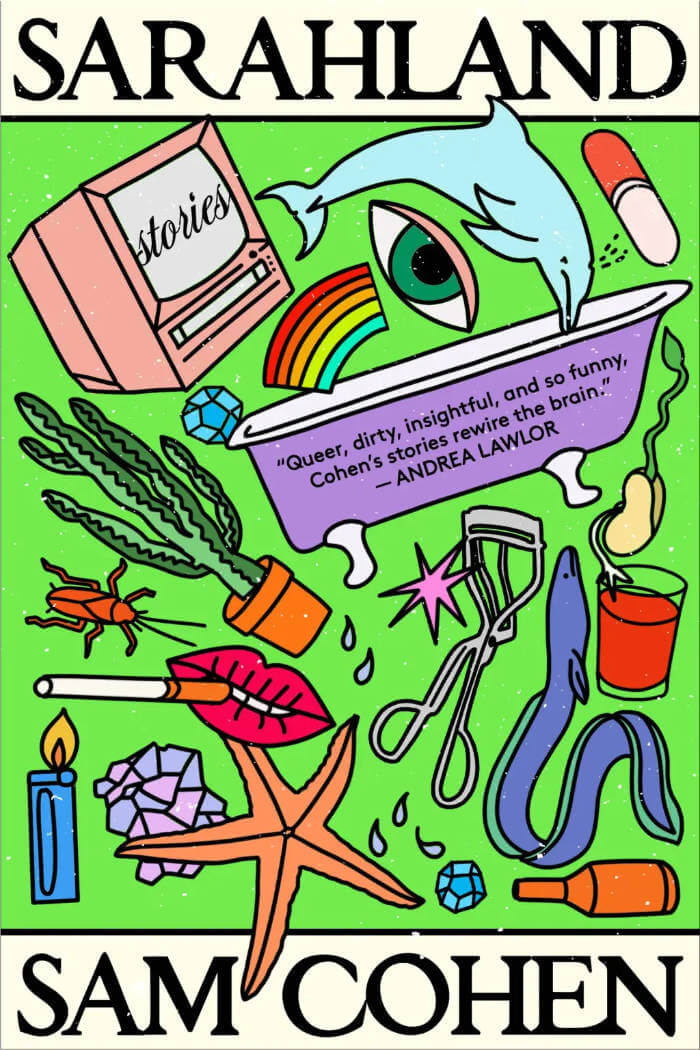
Sarahland
In Sarahland, Sam Cohen brilliantly and often hilariously explores the ways in which traditional stories have failed us, both demanding and thrillingly providing for its cast of Sarahs new origin stories, new ways to love the planet and those inhabiting it, and new possibilities for life itself. In one story, a Jewish college Sarah passively consents to a form-life in pursuit of an MRS degree and is swept into a culture of normalized sexual violence. Another reveals a version of Sarah finding pleasure—and a new set of problems—by playing dead for a wealthy necrophiliac. A Buffy-loving Sarah uses fan fiction to work through romantic obsession. As the collection progresses, Cohen explodes this search for self, insisting that we have more to resist and repair than our own personal narratives. Readers witness as the ever-evolving "Sarah" gets as a bible-era trans woman, an aging lesbian literally growing roots, a being who transcends the earth as we know it. While Cohen presents a world that will clearly someday end, "Sarah" will continue.
In each Sarah's refusal to adhere to a single narrative, she potentially builds a better home for us all, a place to live that demands no fixity of self, no plague of consumerism, no bodily compromise, a place called Sarahland.
"Queer, dirty, insightful, and so funny" (Andrea Lawlor), this coyly revolutionary debut story collection imagines new origins and futures for its cast of unforgettable protagonists—almost all of whom are named Sarah.

Xenogenesis
An extensive and comprehensive polyphonic exploration of the work of The Otolith Group, coming at a pivotal point in their practice.
The work of this London-based artist's collective comprised of Anjalika Sagar and Kodwo Eshun covers politics of race and diversity and incorporates film making and post-lens-based essayistic aesthetics that explore the temporal anomalies, anthropic inversions, and synthetic alienation of the posthuman, the inhuman, the non-human, and the complexity of the environmental conditions of life we all face.
Presenting all bodies of work contained in the Xenogenesis exhibition, this publication includes many materials and graphics from The Otolith Group's broader practice, including performance, lecture and research material. The outcome of over four years of collaboration, research and conversation, the publication is not a chronological exhibition catalogue or retrospective but a cross-section of their work which includes substantial contributions from the artists themselves, in the form of writing and direct engagement with its production.
The publication also brings together important thinkers, scholars, art historians and writers from disparate fields, who know and have worked with the group, as well as those who are writing from a contemporary perspective. They include Denise Ferreira da Silva, Annie Fletcher, Anselm Franke, Shanay Jhaveri, George E. Lewis, Mahan Moalemi, Fred Moten, Grant Watson, Vivian Ziherl and the late Mark Fisher each of whom reflect on a particular aspect of the Group's practice with supplementary materials such as archival images, documented conversations, early lecture performances as well as other accompanying texts and examinations of their research sites.

My Mother Laughs (UK Edition)
In 2013, the filmmaker Chantal Akerman's mother was dying. She flew back from New York to Brussels to care for her, and between dressing her, feeding her and putting her to bed, she wrote. She wrote about her childhood, the escape her mother made from Auschwitz but didn't talk about, the difficulty of loving her girlfriend, C., her fear of what she would do when her mother did die. Among these imperfectly perfect fragments of writing about her life, she placed stills from her films. My Mother Laughs is both the distillation of the themes Akerman pursued throughout her creative life, and a version of the simplest and most complicated love story of all: that between a mother and a daughter.
Translated by Daniella Shreir with an introduction by Eileen Myles and afterword by Frances Morgan.
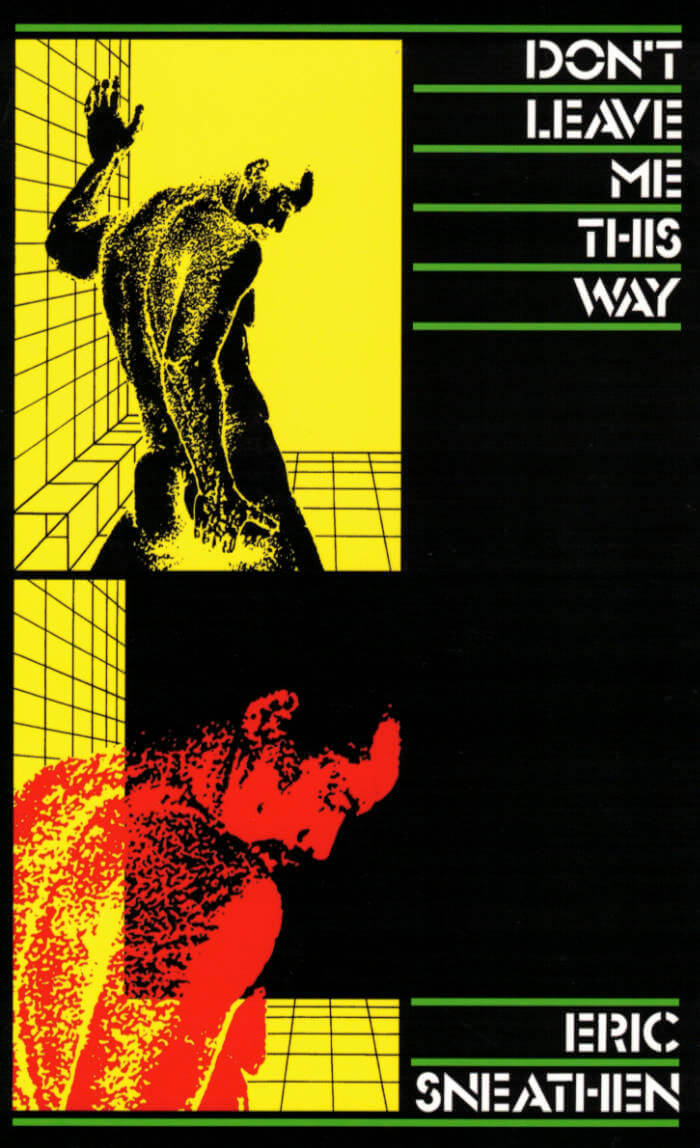
Don't Leave Me This Way
A textual and historigraphical odyssey imbued with queer intergenerational yearning and loss.
Don't Leave Me This Way blends archival research with sexual fantasy to produce a series of sonnets inspired by Gaétan Dugas, named by Randy Shilts as "Patient Zero" of the AIDS epidemic in North America. Committed to the utopian possibilities of elegy and pornography, Don't Leave Me This Way exploits the absurdist beauty of the cut-up technique to voice a chorus of lost spirits: poignant, vengeful, and ready to ball.
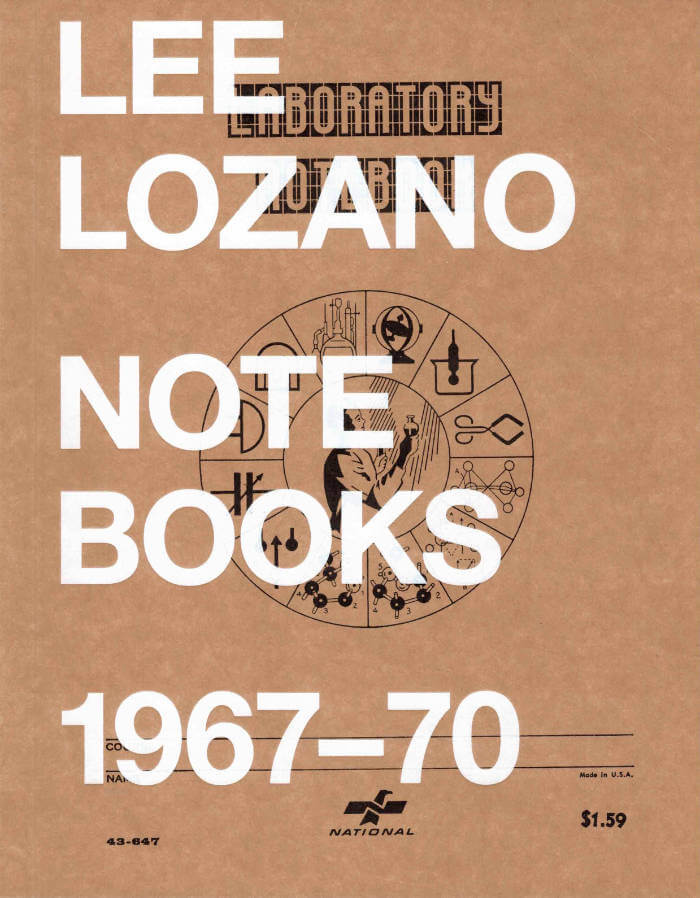
Notebooks 1967-70
This publication is a compilation of Lee Lozano’s notebooks from 1967 to 1970. The three notebooks included here contain her seminal “Language Pieces” and drawings for her paintings, including 12 studies for her 11-panel masterpiece, “Wave Series.”
Lee Lozano (1930-1999) was an enigmatic artist making a diverse body of drawings, paintings, and conceptual works. While prolific, her production was limited to her time in New York from the early 1960s to the early 1970s. She was very actively engaged with other artists in New York until she decided to leave the art world in 1972. Until recently, much of her work has been difficult for the public to access. From the time of her boycott of the art world until her death, Lozano was an artist working conceptually even though she did not participate actively in the commercial art world for the last three decades of her life.
The pages of the notebooks contain notes and sketches related to her abstract paintings and also contain her texts, which were known as “Language Pieces.” The artist’s work in the books reveal her desire to live and create art within a structured system. Lozano considered the individual pages of her notebooks to be drawings, and they were sometimes separated and exhibited. Twenty-five years ago, the notebooks were photocopied and it is that record which serves as the basis for this book.
Notebooks 1967-70 was first published by Primary Information in 2010. This is the second printing.
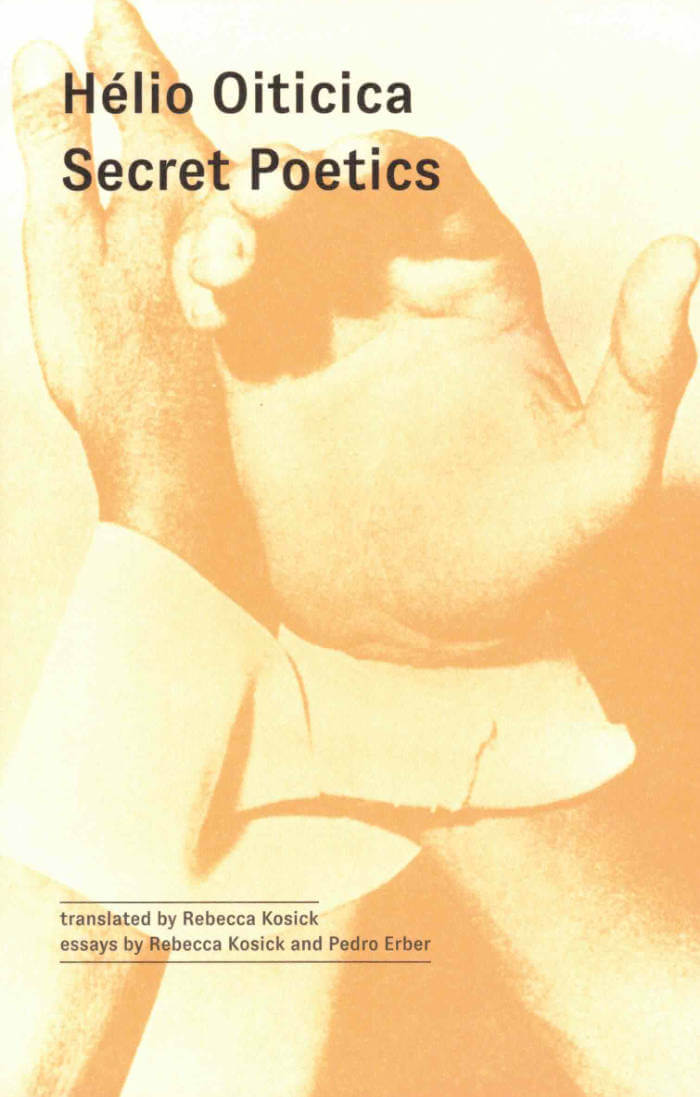
Secret Poetics
Hélio Oiticica (1937-80) is widely considered one of Brazil's most significant artists, and his influence is felt across a range of disciplines including painting, film, installation and participatory art. He is well known as a key founder of the interdisciplinary movement known as Neoconcretismo, launched in Rio de Janeiro in 1959 with the collaboration of artists and writers including Lygia Clark, Lygia Pape and Ferreira Gullar.
Between 1964 and 1966, moving out of his Neoconcretist period, Oiticica wrote a series of lyrical poems entitled Poâetica Secreta (Secret Poetics), and he reflected in a private notebook on their significance for his wider practice as an artist. Despite Oiticica's global fame, his "secret" poems are almost unknown and have never been published as a collection.
This bilingual edition, with accompanying essays by translator Rebecca Kosick and critic Pedro Erber, uncovers the significance of poetry for Oititica's art and shows its importance to his thinking on participation, sensation and memory

Deviant Propulsion
Delving into the center of the endless webs of repression against our bodies, desires, politics, and imaginations, are those whose actions and motion cut away at the systemic limitations of society–this collection of poems was written with the inspiration and work of these people in mind.
As a working class queer poet, Conrad has had to fight through different stratifications of oppression his entire life. His poems vibrate with the flamboyant desire that manifests itself in queer culture, where the right to act on basic desires can become a battleground, and everyday acts of love and devotion must be enacted as a political form of defiance. Deviant Propulsion is dedicated to the elimination of fear. The title refers to the idea that those who are deviant propel the world forward at top speed. The poems that emerge from this life-long struggle illustrate the sharp edge of that defiance and desire, where joy is closely linked to death. In a world ruled by those who govern with fear, and in a landscape barbed with those who are terrified of desire, moving at speed of deviants is the only way to transform potential into action, and desire into positive change.
CAConrad is the author of nine books of poetry and essays, including their latest book JUPITER ALIGNMENT: (Soma)tic Poetry Rituals and While Standing in Line for Death, which won a Lambda Book Award. A documentary about their work, The Book of Conrad, is viewable online on their website.

Natural Enemies Of Books: A Messy History Of Women In Printing And Typography
Sara Kaaman, Maryam Fanni and 1 more
Natural Enemies of Books is a response to the groundbreaking 1937 publication 'Bookmaking on the Distaff Side', which brought together contributions by women printers, illustrators, authors, typographers, and typesetters, highlighting the print industry’s inequalities and proposing a takeover of the history of the book. Edited by feminist graphic design collective MMS, the publication includes newly commissioned essays and poems, conversations with former typesetters Inger Humlesjö, Ingegärd Waaranperä, Gail Cartmail, and Megan Downey, and reprints of the original book and other publications.

poussière de seum
“the following text was written in July 2024 in St Imier, Switzerland.
it's a fragment of Lettres à Bébé, a book I've been writing for some time in which I - Ethan - find myself helping and communicating by letter with a Marxist Baby whose political project is not to grow up so as not to become a tool of Capital. While he develops his project and tells it to me, I live my life and tell it too, observing and commenting on the ignoble state of the world, its language, its architecture, managing my heartbeat, meeting people, working, fucking, eating (...)”. - Ethan Assouline
Published by La Dépendance, St imier (2024)

Direct Into Chaos
Aleen Solari’s work is shaped profoundly by insights into various subcultures. These insights are partly drawn from her own experiences, partly borrowed from members of certain scenes who she invites to be part of her work. Her sculptural practice moves in and out of life within these groups, and is full of codes and quotations from antifa members, football hooligans, bored youth clubs or those embedded in neonazi networks.
Direct Into Chaos is a book that dives deep into these worlds, shape-shifting between fiction, documentation and artwork. In ghost written texts, Solari fictionalises her own artistic biography, morphing interviews with football hooligans who had their phones tapped by the police, into a dream world where they receive generous compensation for years lived under surveillance.
In this publication – in a chaotic, dreamlike state of mind – fiction and documentation, art and activism meld into something new.
Aleen Solari is an artist who lives in Hamburg, Germany
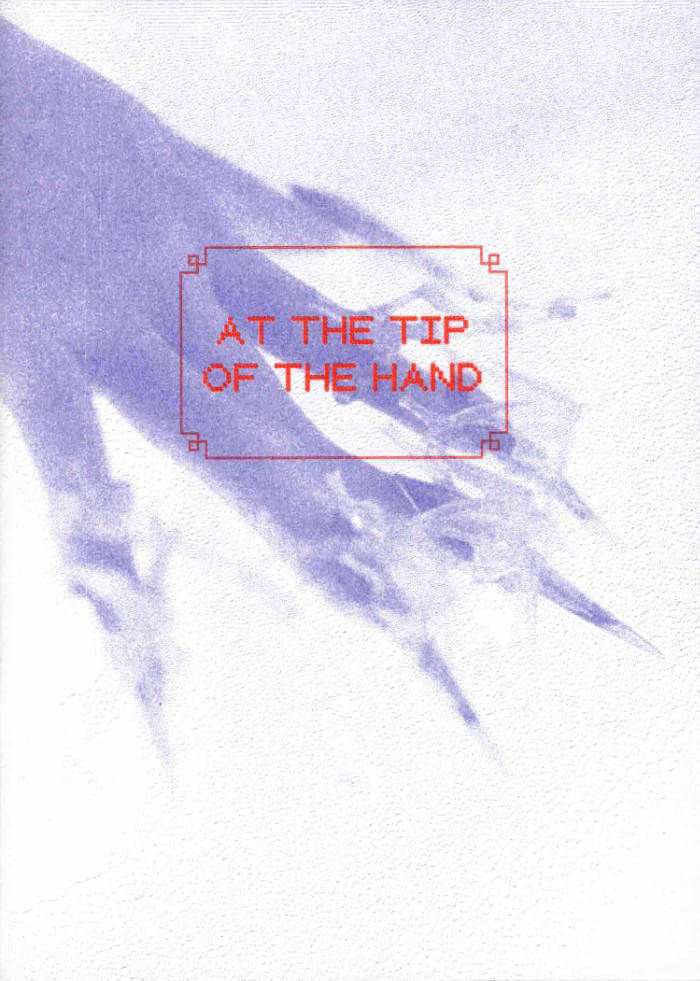
At the tip of the hand
"At the tip of the hand" explores the nail salon as a space of labour and social exchange. The act of two women holding hands, applying polish, and waiting for it to dry is more than a beauty ritual. It is a moment of care, but also a reflection of the social expectations placed upon ‘cultivated’ bodies and the invisible work behind them. Beneath a flawlessly coated nail, unseen bodies persist—serving, tending, remaining out of sight.

Un rectangle quelconque n°6
Tomas Sidoli, Emmanuel Régniez and 1 more
Avec les poèmes et traductions de: Pierre Escot, Marine Forestier, Adrien Lafille, Alexis Aurdren, Maud Joiret.
Édition: Thomas Le Goff, Emmanuel Régniez, Tomas Sidoli.
Les éditions du quelconque se divisent en deux projets, une maison d'édition (à venir) et une revue, Un Rectangle Quelconque. Cette dernière, chaque semestre, propose de découvrir des auteurs de poésie venant de tous horizons géographiques et esthétiques. La maison d'édition, elle, sera l'occasion de présenter aux lecteurs francophones des nouvelles voix de la poésie actuelle.

Having a party (hope you will be there)
"Having a party (hope you will be there)", is a catalogue of an exhibition organized by Mickael Marman and D&TLG at CFAlive in Milan with artists from the black European diaspora, including original contributions, photos of the show, as well as a brand new intro text by Olamiju Fajemisin.

nY49 — trans*
Sven Van den Bossche, Hans Demeyer and 1 more
“Een thematisch nummer maken over trans*esthetiek riskeert trans*heid meteen als iets aparts te signaleren, als iets wat niet simpelweg kan zijn; hoe stel je ‘gewoon’ een special issue samen?”
Het nummer werd samengesteld door Dagmar Bosma, Hans Demeyer en Sven Van den Bossche.
Met bijdrages van: Ada M. Patterson, Camille Pier, Sven Van den Bossche, Alara Adilow, Nour Helou & Afrang Nordlöf Malekian, Mariken Heitman, misha verdonck, Dagmar Bosma, Hans Demeyer, Torrey Peters, Kato Trieu, Valentijn Hoogenkamp, Romeo Roxman Gatt, Lieks Hettinga, Kalib Batta, Kopano Maroga, Hannah Chris Lomans en Nele Buyst.

Brick by Brick: How We Build a World Without Prisons
The fight for prison abolition is a struggle for collective liberation: a transformative vision of a safer world, in which communities live free from exploitation on a thriving planet.
Drawing connections across social justice movements with a shared abolitionist ethic, this revolutionary book illuminates how harmful ideas of criminality and punishment can manifest in many ways beyond the prison industrial complex. This work is a collaboration with friends, mentors and giants fighting for housing justice, food justice, climate justice, migrant justice, justice for survivors of violence, and more.
With this insightful and generous book, now in its second edition, Cradle Community invites us to explore what it will take to dismantle structures of oppression, and to imagine the future we can rebuild together—brick by brick.
Cradle Community is a collective of organisers committed to radical education and building understanding of prison abolition and transformative justice. Brick by Brick is their first book.

Els Dietvorst E.D. (2010–2014)
This publication presents a survey of the work of Els Dietvorst from 2010 to 2014. This is also the period in which she left Brussels to live in a village on the south-east coast of Ireland, where she focused on projects such as The Black Lamb. The audio piece One was killed for beauty, another one was shot, the two others died naturally is included on an audio CD.
Els Dietvorst E.D. (2010–2014), Rolf Quaghebeur, Eva Wittocx, Katleen Weyts, Els Dietvorst, Brussels, 2014.
